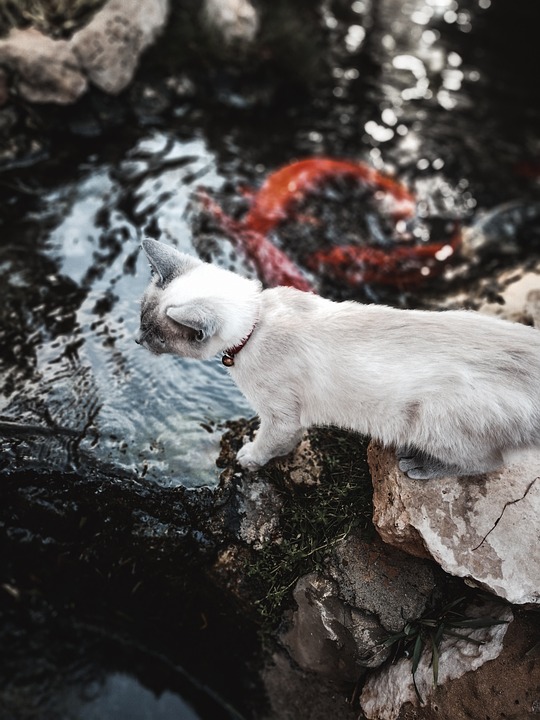Title: Natural Control of Fish Tank Algae: Harnessing the Power of Algae Eaters
Introduction
In any aquarium, maintaining a healthy and balanced ecosystem is vital for the well-being of its inhabitants. Algae growth is a common challenge faced by fishkeepers, as excessive algae can negatively impact water quality and compromise the overall health of fish. However, utilizing fish tank algae eaters can provide a natural and effective solution to control algae growth. In this article, we will explore the benefits of using algae eaters and provide valuable insights on selecting and caring for these helpful aquatic creatures.
Why Use Algae Eaters?
1. Algae Control without Chemicals: Algae eaters offer a natural and eco-friendly approach to combatting excessive algae growth. Unlike chemical treatments that may harm the aquarium’s delicate ecosystem, algae eaters provide a sustainable solution that maintains a healthy balance within the tank.
2. Improved Water Quality: Excessive algae growth not only affects the aesthetics of the aquarium but also contributes to poor water quality. Algae eaters help to keep algae in check, preventing the accumulation of organic waste and maintaining optimal water conditions for your fish.
3. Algae Eaters as Natural Cleaners: Algae eaters actively graze on different types of algae, including green, brown, and even stubborn blue-green algae. Their feeding activities help prevent algae from overrunning the tank, reducing the need for manual cleaning and maintenance.
Choosing the Right Algae Eaters
1. Research the Species: Different algae eaters have varying dietary preferences and compatibility with certain fish species. Conduct thorough research to understand the specific requirements and behaviors of potential algae eaters before introducing them to your aquarium.
2. Consider Tank Size: Some algae eaters, such as plecos and common snails, may grow quite large. Ensure that your tank is spacious enough to accommodate their growth and provide ample hiding spaces and suitable habitats.
3. Compatibility with Tankmates: While most algae eaters are peaceful, it’s crucial to consider their compatibility with other fish species in your tank. Some large algae eaters may become territorial and disrupt the tank’s harmony, so choose species that will coexist peacefully with your existing fish community.
4. Evaluate Activity Levels: Algae eaters vary in their activity levels, with some being more active during the day, while others are nocturnal. Consider your personal preferences and the overall tank dynamics when selecting algae eaters to ensure they are a good fit for your aquarium.
Caring for Algae Eaters
1. Provide Appropriate Diet: While algae are a significant part of their diet, algae eaters also require additional nutrition for optimal health. Supplement their diet with high-quality sinking pellets, fresh vegetables (such as blanched spinach or zucchini), or specialized algae wafers to ensure they receive a balanced diet.
2. Maintain Water Quality: Adequate filtration and regular water changes are essential for the well-being of both your fish and algae eaters. Algae eaters produce waste like any other fish, so it’s crucial to monitor and maintain optimal water parameters to keep them healthy.
3. Monitor Algae Levels: Keep a close eye on the algae growth in your tank. If the algae eaters are struggling to keep up with the growth, consider adjusting the lighting duration or intensity, as excessive light can promote algae growth.
FAQs (Frequently Asked Questions)
1. Can algae eaters survive solely on algae?
Algae eaters primarily rely on algae as a food source, but it’s important to supplement their diet with other nutritious foods to ensure their overall health and longevity.
2. Will algae eaters harm my live plants?
Most algae eaters do not harm live plants. However, certain species, like some plecos, may nibble on softer plants. It’s essential to choose algae eaters that are plant-friendly if you have a heavily planted tank.
3. How many algae eaters should I have in my aquarium?
The number of algae eaters you need depends on the size of your tank and the severity of the algae problem. As a general guideline, one algae eater per 10 gallons of water is a good starting point.
4. Do all algae eaters eat the same types of algae?
Algae eaters have different preferences, and while most consume various types of algae, it’s essential to research the specific species to ensure they will target the specific algae issues in your tank.
5. Can I keep multiple species of algae eaters together?
In most cases, keeping multiple species of algae eaters together is possible, as long as they are compatible in terms of size, temperament, and dietary requirements. However, it’s crucial to provide enough space and resources for all inhabitants.
Conclusion
Harnessing the natural abilities of algae eaters can significantly contribute to maintaining a healthy and balanced fish tank environment. By carefully selecting suitable species, providing proper care, and monitoring their activity, you can effectively control algae growth while ensuring the well-being of your fish and other aquarium inhabitants. Remember, a harmonious ecosystem starts with a little help from our algae-eating friends.









